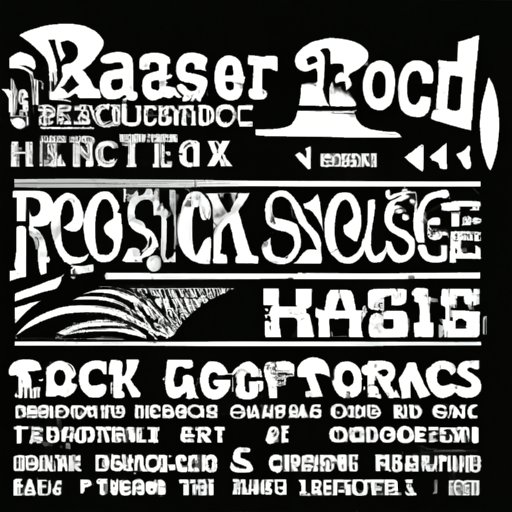Introduction
Rap is one of the most popular genres of music today. But where did it come from? This article will explore the history of rap music and trace its origins back to its earliest beginnings. We’ll look at the social and cultural influences that shaped the genre, as well as the pioneering DJs and MCs who helped to create it. By the end of this article, you’ll have a better understanding of how rap music came to be and the role it has played in popular culture.

A Historical Overview of the Birthplace of Rap Music
The roots of rap can be traced back centuries, to traditional African folk songs and chants. These songs featured call-and-response patterns and often told stories about important events or figures in the community. As African slaves were brought to the Americas, many of these musical traditions were carried along with them.
In the late 1960s and early 1970s, the genre began to take shape in the United States. DJs in the South Bronx, New York City, began to experiment with records, playing two copies of the same record simultaneously to extend the instrumental break. They also began to incorporate their own commentary, known as “toasting”, between songs. This was the birth of the modern MC, and the beginning of rap as we know it today.
Tracing the Origins of Rap: Exploring the Roots of a Genre
The development of rap music was highly influenced by African American culture. The call-and-response patterns found in traditional African folk songs served as the foundation for rap’s lyrical structure. Likewise, the improvisational nature of jazz and blues music was also an influence on early rap.
The Jamaican sound system – a form of outdoor sound system featuring DJs and MCs – was also an important influence. Jamaican immigrants in the United States brought their musical tradition with them, and it quickly spread throughout the Bronx. DJs and MCs began to adopt the Jamaican style of toasting, and rap music as we know it today began to take shape.

The South Bronx and the Beginnings of Rap Music
The South Bronx was a hotbed of creativity in the 1970s and 1980s. Poverty, crime and violence were rampant, and the people of the area had few outlets to express themselves. Hip-hop culture emerged as a way for people to cope with the harsh realities of life, and rap music served as a powerful form of expression.
Early rappers faced immense challenges in getting their music heard. Many of them performed in parks and street corners, often for free. Parties and block parties became popular venues for rap music, and DJs and MCs would battle each other for bragging rights. This type of competition helped to spur creativity and push the boundaries of the genre.
Examining the Socio-Political Factors that Influenced the Creation of Rap
Rap music was heavily influenced by the socio-political climate of the time. Racism and classism were rampant in the United States, and African Americans faced discrimination in virtually every aspect of life. Rap music provided a platform for people to express their frustrations and speak out against injustice.
Hip-hop culture also played a major role in the development of rap music. Hip-hop was a way of life in the South Bronx, and it provided a sense of identity and community for African Americans. Early rappers drew inspiration from hip-hop culture, adopting its slang and fashion and using it as a way to express themselves.

How the MC was Born: A Look at the Pioneers of Rap Music
Although there were many innovators in the early days of rap music, a few stand out as true pioneers. DJs such as Grandmaster Flash, Afrika Bambaataa and Kool Herc are credited with laying the groundwork for the genre. They experimented with turntables, sampling and scratching, creating a new sound that would soon become known as rap.
Other early innovators include Sugarhill Gang, Kurtis Blow and Run-DMC. These pioneering DJs and rappers helped to define the genre and bring it to mainstream audiences. Their influence can still be felt today, as their music continues to inspire and influence new generations of artists.
From Battle Rhymes to Block Parties: A Look at the Evolution of Rap Music
Since its inception, rap has evolved and changed dramatically. From its early days as a party music, it has grown to encompass a wide range of styles and subgenres. From gangsta rap to trap music, rap has grown to encompass a variety of different sounds and themes.
Technology has also played a major role in the evolution of rap music. Digital sampling and production software have made it easier for artists to create complex beats and layered sounds. Social media platforms have opened up new avenues for distribution and promotion, allowing independent artists to reach wider audiences.
Conclusion
Rap music has come a long way since its humble beginnings in the South Bronx. Today, it is one of the most popular genres of music in the world. Its influence can be seen in virtually every aspect of popular culture, from fashion to film. While its exact origins may never be known, it is clear that rap has played an important role in shaping our society.
(Note: Is this article not meeting your expectations? Do you have knowledge or insights to share? Unlock new opportunities and expand your reach by joining our authors team. Click Registration to join us and share your expertise with our readers.)
